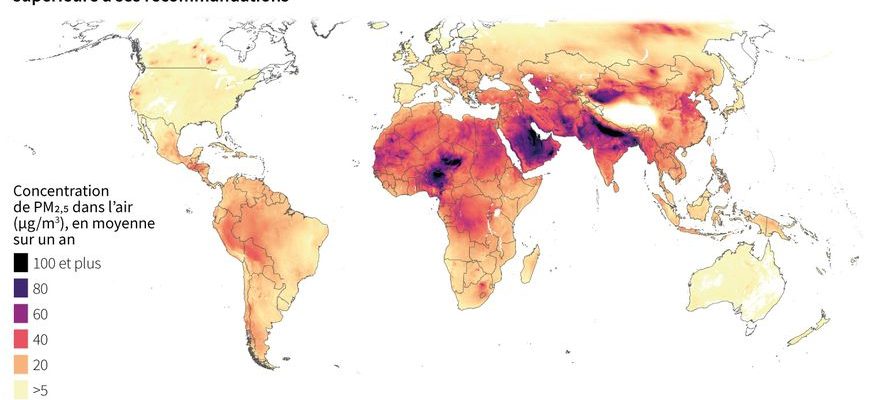Heat waves, more intense and more frequent due to climate change, are concocting an “evil potion” of pollutants that threaten humans and all living beings, the UN warned on Wednesday, September 6. If the sheets of smoke caused by the forest fires which smothered Athens or New York this summer are the most visible part of the air pollution caused by the heat waves, they also induce a whole series of more insidious and dangerous chemical processes. for health. “Heat waves deteriorate air quality, with repercussions for human health, ecosystems, agriculture and even our daily lives,” said Petteri Taalas, Secretary-General of the World Meteorological Organization, at occasion of the publication of the Bulletin on air quality and climate.
A recent study by the University of Chicago’s Energy Policy Institute (EPIC) found that fine particle pollution – emitted by motor vehicles, industry and fires – poses “the greatest external threat to global public health. Climate change and air quality “go hand in hand and must be fought together to break this vicious circle”, underlined the boss of the OMM, stressing that if the Bulletin relates to the data of 2022, “what we see in 2023 is even more extreme.” Climate change is increasing the frequency and intensity of heat waves, and this trend is expected to continue in the future.
This Wednesday, the European Copernicus service announced that the world has just experienced its three hottest months on record. It is also the hottest August ever measured and the second hottest month after July 2023. “Heat waves and wildfires are closely linked. The smoke from wildfires contains a potion diabolical chemical element that not only affects air quality and health, but also damages plants, ecosystems and crops – and leads to more carbon emissions and therefore more greenhouse gases in the world. ‘atmosphere,’ said Dr Lorenzo Labrador, manager of the Atmospheric Watch Network and author of the Bulletin. However, he stressed that it was “too early” to determine whether 2023 will be worse for air pollution than last year “despite a record-breaking wildfire season in Europe and western Canada. “. “It must be taken into account that the relationships, interactions and chemical processes that link climate change to air pollution are not linear,” he said at a press conference.
Fine particle pollution
© / afp.com/Valentin RAKOVSKY, Sabrina BLANCHARD
Dangerous Liaisons
If climate change and atmospheric pollutants, such as ozone, volatile organic compounds or even aerosols, have very different durations, the two are nevertheless linked. “Air quality and climate are interconnected because the chemical compounds that affect them are linked, because the substances responsible for climate change and degradation of air quality are often emitted from the same sources and because changes in one inevitably lead to changes in the other,” the WMO said.
Concerning 2022, the Organization recalls that the long heat wave which hit Europe led to an increase in the concentrations of particles and tropospheric ozone (just above the surface of the earth). And the concentrations exceeded the level recommended by the WHO on most of the European continent. During the second half of August 2022, unusually large masses of desert dust were observed over the Mediterranean and Europe.
“The coincidence of high temperatures and high amounts of aerosols, and therefore particle content, has affected human health and well-being,” notes the WMO. Ozone concentration also reduces the quantity and quality of yield of staple food crops. “Globally, crop losses due to ozone average 4.4-12.4% for staple food crops, with wheat and soybean losses as high as 15-30% in major agricultural areas of India and China,” according to the Bulletin.
